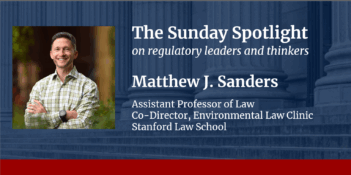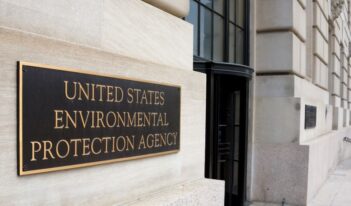
Scholars argue EPA may already have the tools it needs to effectively regulate greenhouse gases.
With the U.S. Environmental Protection Agency’s (EPA) Clean Power Plan blocked in court and facing an uncertain future under the Trump Administration, does the agency have any other tools at its disposal to achieve the U.S. climate change goals made in the Paris Climate Agreement?
In a recent paper by legal scholars, the answer comes in the form of a little-known, decades-old statutory provision. The paper’s six authors focus on a section of the Clean Air Act that authorizes EPA to require states to address emissions that contribute to air pollution that endangers public health or welfare in other countries if those countries provide the United States with reciprocal environmental protections.
Notably, the section does not limit EPA to regulating a particular type of pollution or a given industrial or economic sector. Because of this wide grant of authority, the authors argue that EPA and the states have broad latitude to address international air pollution and could implement such a plan with ease through the state-by-state planning process that EPA currently uses for other air pollutants.
Under the authors’ proposed approach, EPA could work with states to develop a coordinated and comprehensive national program to reduce emissions. Specifically, EPA could establish an economy-wide, market-based plan for reducing greenhouse gas emissions that gives states and regulated entities flexibility in achieving regulatory goals.
Although this approach encourages federal and state coordination in a manner similar to that of the contested Clean Power Plan, it differs in its focus on simplifying climate change regulation under a single, unified approach with goals set by both EPA and the states. The authors suggest that this form of collaborative regulation is consistent, easy to follow, and cheaper than regulatory alternatives, thus rendering it more likely to be accepted by politicians, courts, and regulated parties.
The authors argue that regulating greenhouse gas emissions in a holistic manner is preferable since it can increase administrative efficiency and reduce burdens on regulated entities. They believe that EPA’s current approach to greenhouse gas regulations—which covers emissions from motor vehicles, transportation fuels, new and existing power plants, the oil and gas sector, and municipal landfills—is not optimal since it only addresses individual sources of pollution.
Under the proposed approach, EPA and the states could address multiple sources of greenhouse gases in a single proceeding and incorporate “economic incentives such as fees, marketable permits, and auctions of emission rights” into regulations. Regulators could thus avoid promulgating dozens of source-specific greenhouse gas regulations under other provisions of the Clean Air Act while simultaneously allowing businesses to lower their compliance costs through reliance on market-based approaches.
To make the proposed approach effective, however, the authors maintain that EPA must determine the aggregate amount of U.S. emissions reductions necessary to achieve climate goals. The trans-boundary nature of air pollution means that emissions from all states contribute to foreign endangerment, so some form of national planning must be engrafted onto the state-by-state planning process.
The authors thus encourage EPA to adopt the goal the United States set forth in the target it submitted to the United Nations Framework Convention on Climate Change in advance of the Paris Agreement. The U.S. target is to reduce its overall greenhouse gas emissions by 26-28 percent below 2005 levels by 2025, and to make best efforts to reduce emissions by 28 percent.
To minimize disparate impacts on states, the authors note that EPA can consider apportioning emissions allowances using two different approaches. First, EPA could begin by setting a goal for each state to meet a particular percentage reduction of emissions, as measured from the same baseline year. Second, it might require each state to reduce its emissions to a point where marginal cost reductions are equal across states, thereby achieving the overall U.S. target by assigning responsibility based on implementation costs.
Combining these methods would entail assigning a portion of required reductions as a percentage of state emissions and another portion of reductions based on cost. With this multifaceted approach, EPA could use its discretion to achieve the Paris target in an equitable manner while coordinating with states to address state-specific issues.
Other scholars agree that this approach holds great promise for the regulation of greenhouse gases but point to several legal risks associated with the strategy. For example, Nathan Richardson of the University of South Carolina School of Law fears that courts may decide that Congress could not have intended to embed such authority in an obscure provision of an old statute. Even if supporters clear that hurdle, Richardson argues that courts might rule that the Clean Air Act’s provision governing international air pollution may be limited to “conventional” pollutants and does not extend to carbon dioxide emissions.
Moreover, although the authors’ approach seeks to maximize administrative efficiency and reduce the compliance costs of climate change regulation, the promulgation of any EPA rule requires authorization from EPA leadership, including Administrator Scott Pruitt. EPA leadership may not approve such a rule, however, if it appears to closely resemble the Clean Power Plan, or if addressing climate change is not a priority under the new Administration.
Nevertheless, the paper offers a novel solution to regulating greenhouse gas emissions in what could be an uncertain future for environmental regulation.



